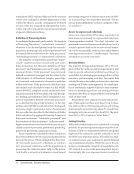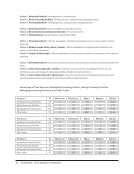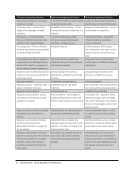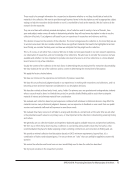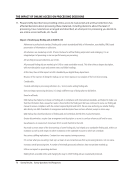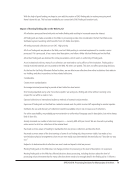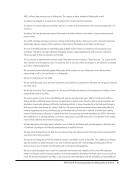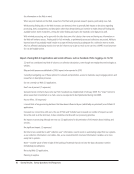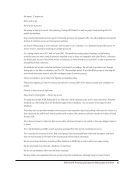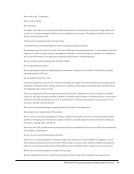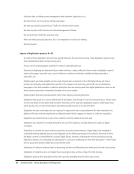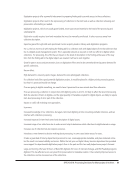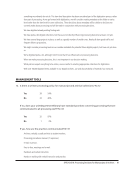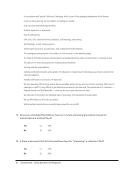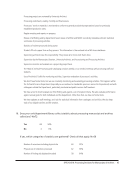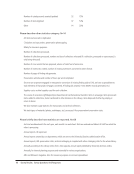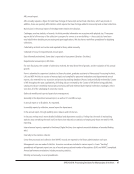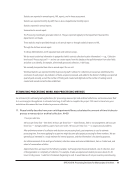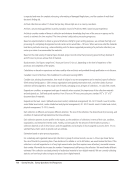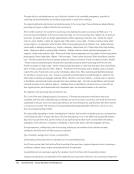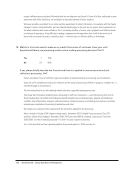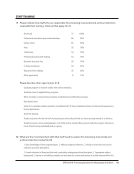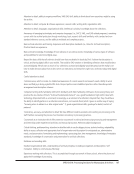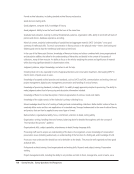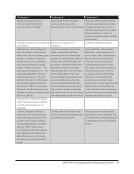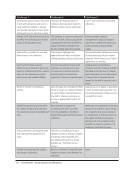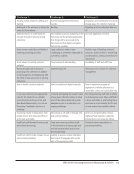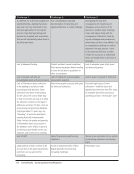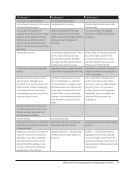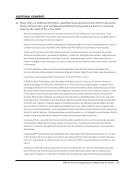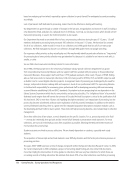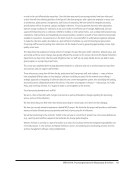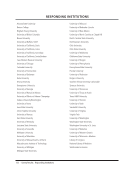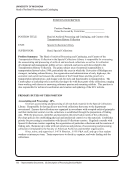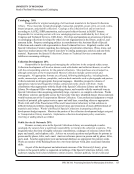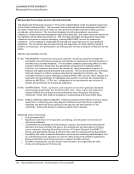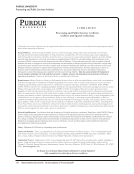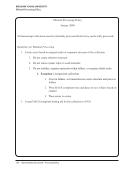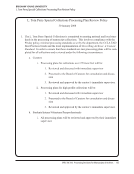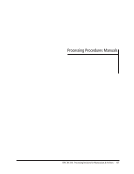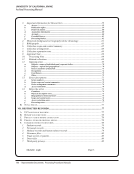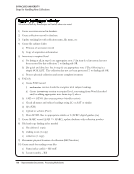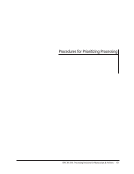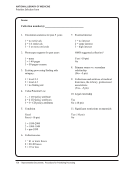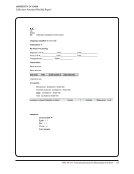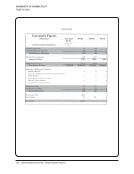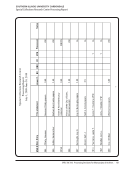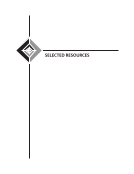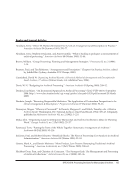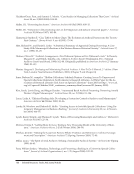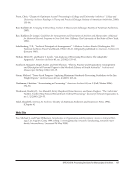SPEC Kit 314: Processing Decisions for Manuscripts &Archives · 89
Digitization projects offer a powerful inducement to preparing finding aids to provide access to those collections.
Digitization projects often result in the reprocessing of collections to the item level as well as collection rehousing and
preservation reformatting as needed.
Digitization projects, which are usually grant funded, move unprocessed material to the head of the processing and
cataloging line.
Digitization usually requires item-level metadata that must be manually contributed. It takes resources away from
collective description.
Expertise gained through EAD work positioned Curator as policy leader in library-wide digitization programs.
For us, this has more to do with making the finding aid for a collection work with digital objects from that collection that
live in a digital assets management system. This is especially relevant as we push on with our efforts to digitize whole
collections. For processing, this effort has an impact on the levels of description in the finding aid because of the way
links from the finding aid to the digital objects are created. It all has to work together.
Great for patron access and preservation, but our digitization efforts tend to be somewhat driven by patron demand for
specific collections.
Has no effect.
High demand for university sports images demand for some photograph collections.
If a collection looks like a good potential digitization project, it would be placed in a higher priority processing queue
but how it is processed would not change.
If we are going to digitize something, we need to have it processed to a more minute level than otherwise.
If we are processing a collection in conjunction with digitizing some or all of it, it’s likely to affect the level of processing.
Both the selection of items to digitize, and the type/quantity of metadata required for digital objects, are likely to require
item-level processing of all or part of the collection.
Impact on staff, still reviewing new approaches.
In process.
Increased knowledge of our collections but again, item-level digitizing is time consuming and labor intensive, and can
interfere with collections processing.
Increased requests for item-level control and description of digital assets.
Increased usage of our collections due to online access helps to determine which collections to digitize based on usage.
Increases use of collection but also requires resources.
Introduces a new element to decision making about processing, in some cases better access for users.
It takes a great deal of time by department personnel to scan, create appropriate metadata, and place materials online
but the result is increased visibility and access. Within the last year our Digital Library Services department has provided
more support for departmental digitization projects than in the past and this has really helped move projects forward.
Large and looming. We have 30 hours of Newsfilm digitized, 32 hours of interview footage, and 850 Peabody programs
digitized. This has affected us on every level from preservation to metadata creation. It has certainly improved access to
the collections and has increased use of the collections.
Digitization projects offer a powerful inducement to preparing finding aids to provide access to those collections.
Digitization projects often result in the reprocessing of collections to the item level as well as collection rehousing and
preservation reformatting as needed.
Digitization projects, which are usually grant funded, move unprocessed material to the head of the processing and
cataloging line.
Digitization usually requires item-level metadata that must be manually contributed. It takes resources away from
collective description.
Expertise gained through EAD work positioned Curator as policy leader in library-wide digitization programs.
For us, this has more to do with making the finding aid for a collection work with digital objects from that collection that
live in a digital assets management system. This is especially relevant as we push on with our efforts to digitize whole
collections. For processing, this effort has an impact on the levels of description in the finding aid because of the way
links from the finding aid to the digital objects are created. It all has to work together.
Great for patron access and preservation, but our digitization efforts tend to be somewhat driven by patron demand for
specific collections.
Has no effect.
High demand for university sports images demand for some photograph collections.
If a collection looks like a good potential digitization project, it would be placed in a higher priority processing queue
but how it is processed would not change.
If we are going to digitize something, we need to have it processed to a more minute level than otherwise.
If we are processing a collection in conjunction with digitizing some or all of it, it’s likely to affect the level of processing.
Both the selection of items to digitize, and the type/quantity of metadata required for digital objects, are likely to require
item-level processing of all or part of the collection.
Impact on staff, still reviewing new approaches.
In process.
Increased knowledge of our collections but again, item-level digitizing is time consuming and labor intensive, and can
interfere with collections processing.
Increased requests for item-level control and description of digital assets.
Increased usage of our collections due to online access helps to determine which collections to digitize based on usage.
Increases use of collection but also requires resources.
Introduces a new element to decision making about processing, in some cases better access for users.
It takes a great deal of time by department personnel to scan, create appropriate metadata, and place materials online
but the result is increased visibility and access. Within the last year our Digital Library Services department has provided
more support for departmental digitization projects than in the past and this has really helped move projects forward.
Large and looming. We have 30 hours of Newsfilm digitized, 32 hours of interview footage, and 850 Peabody programs
digitized. This has affected us on every level from preservation to metadata creation. It has certainly improved access to
the collections and has increased use of the collections.












